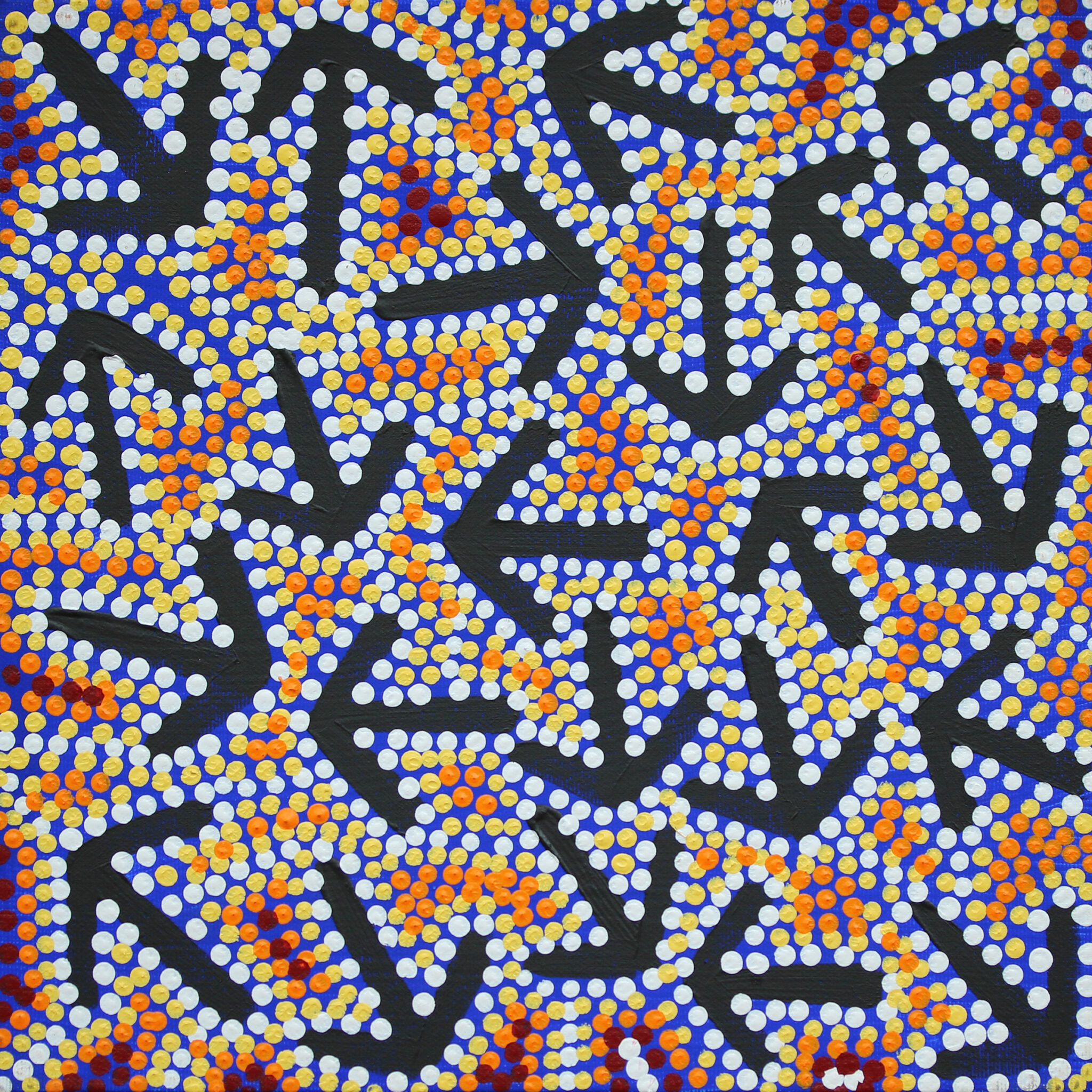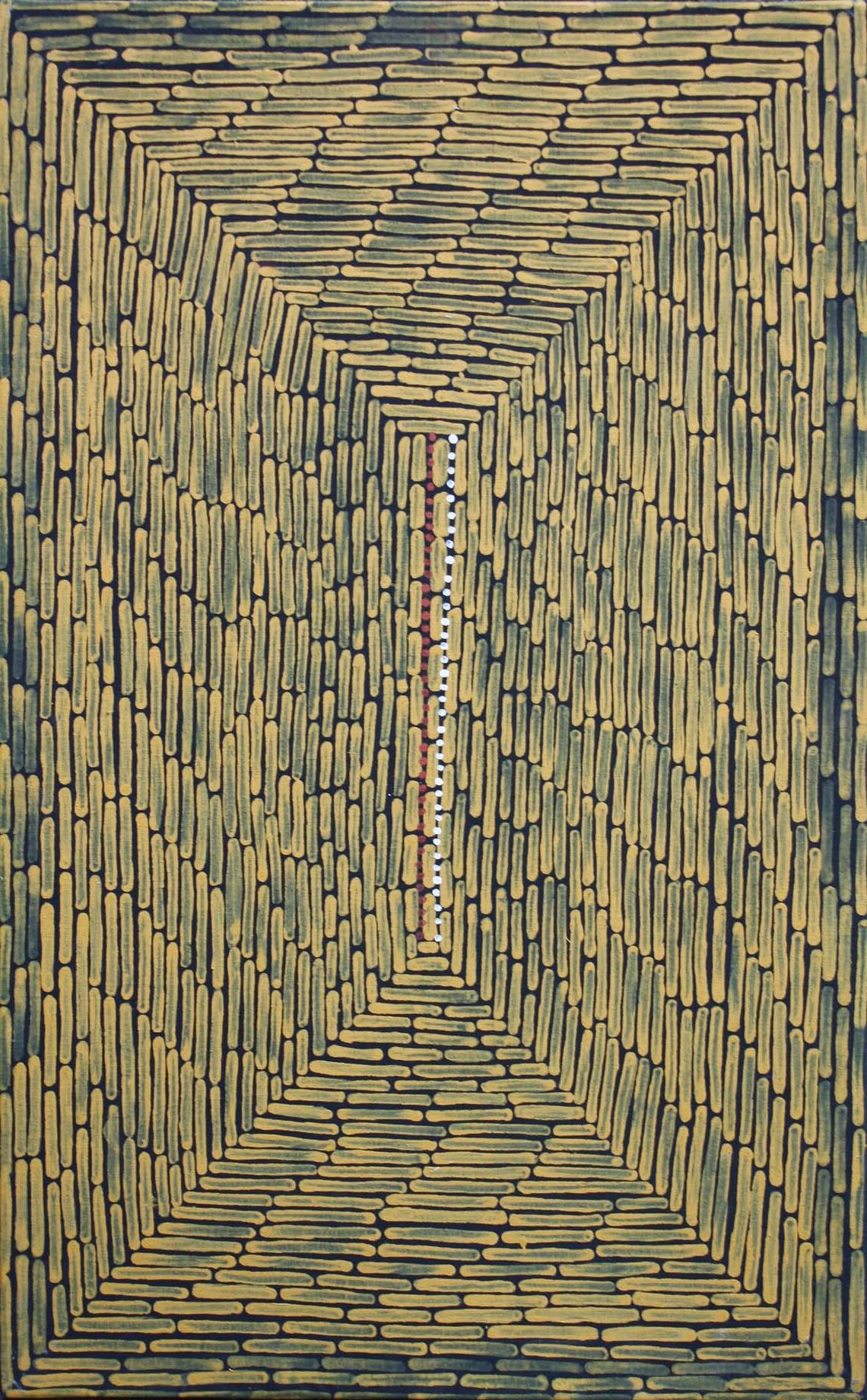Peter Overs
Details
Biography
Peter was born in Brisbane and named Dhinawan Marii. His fullblood grandmother, Murial Hall was born on Anglewood Station on the Queensland side of the Queensland/NSW border, under a tree. His grandfather, Edgar James Draper met and married Murial on the station where the first of many children was Peter’s mother, Florence Overs (formerly Draper). After some time, the Draper’s moved their family to a riverbank on the Balonne Minor River, near Dirranbandi. Dirranbandi is an Aboriginal word meaning frogs around a waterhole. They lived in a traditional manner in a corrugated iron shed with dirt flooring. There were many other Aboriginal families living in similar dwellings on the riverbank, it was known as “The Old Camp”. Like most townships across the country Aboriginal people were prohibited from living in town. It was because of this, Aboriginal camps were constructed on many towns’ fringes. Peter was 5 years old when the ban was lifted. Peter’s grandfather had a job in the railway, which entitled him and his family to railway housing. Peter’s parents, grandparents, aunts, uncles and cousins all moved into town into the same house provided by the railway. In Dirranbandi, Peter attended the local school until year 10. His family remained very close knit and town living did not stop them from doing many traditional things together. Even with an income, they still had bush foods as a major food source. Peter, his brothers and cousins went crayfishing, fishing, and collected bush foods such as Quandongs and wild bush oranges.
Peter has always been artistically inclined and decided to paint full time in 2000. When asked about his reasons for painting and his subjects, he spoke of his connection to his family and his sadness that many aspects of Aboriginal culture had been lost or destroyed since colonization. He isn’t referring to displacement or victimization that were results of political decisions, but of the things they created for everyday use, and have been pretty much entirely replaced by items from the western influence.
Aboriginal culture exists in oral form, where for thousands of year’s tribe members have been learning and passing on knowledge from the Dreamtime, or the time of creation. Symbolism is predominant in Aboriginal culture in many forms and its expression is often portrayed in artistic form – body painting, sand mosaics for ceremony, carving, cave painting, to name a few.
In a natural connection of the subject matter of each work, and the aspects of Aboriginal culture Peter portrays, symbolism is a strong vein throughout each piece. The multi-faceted connection of even the smallest aspect of Aboriginal life, for example bush foods, with so many other areas of their lives, holds a more complex value than non-Aboriginals would expect.
Peter depicts the added facets to each subject with brilliant use of a collection or individual squares (or windows, so to speak), without confusing the viewer with over-explanation.
The importance of the symbolic nature of his paintings is further indicated with the inclusion of one or a small number of bold, outstanding squares, which signify both the country to which he is so clearly connected to, and he identifies the very same square/s as his ‘signature’ square.
Peter paints two specific dreaming stories. These are the Yabby hole Dreaming and the Emu and Quandong Dreaming. The Yabby Hole Dreaming is a reflection of Peter’s own experience, as he loved to go and catch the yabbies and collect the quandongs for his family. Peter really enjoyed catching the native fish called yellow belly in the Balonne River. This fish is also known as Perch in other regions.
The Emu Dreaming was given to Peter by his grandfather. This dreaming involves the Emu eating the quandong fruit and helping to disperse the seeds. This allows the seeds to germinate, flourish and help to regenerate the country. In his works Peter typically shows his grandfather’s country to the top. This area includes a sacred site shown as a bold block or group of blocks. To the lower right is his grandmother’s country that he generally shows as emerging square symbols or like an unfolding page. Each square represents the home place of an important member of his tribe. Superimposed on each square is the footprint of the Ancestral Emu man. This was the being that emerged out of the ground during the Dreamtime or creation period. He moved around the country creating the landscape and its elements – the mountains, hills, valleys, rivers and important sites. Once he had completed his work he became the emu as we now know it. The background to each square depicts various important aspects of the artist’s tribal region. In some cases it is the cracked earth on the sides of the river – an important place where yabbies can be found, the water birds congregate and the animals come to drink – an area very important for bush tucker. In other examples Peter shows the quandong fruit – an olive-like bush fruit very rich in Vitamin C.
Peter’s love of artistic expression began when he was preparing canvases for the artists in Alice Springs and watching them transform black canvases into masterpieces. Artists like Walala, Dr George, Dorothy Napangardi and in particular, Ronnie Tjampitjinpa, inspired him. It was Ronnie who encouraged Peter to start painting his own dreaming stories belonging to his grandfather’s country.
One definitive highlight and specialty of his present work rests in his ability to bring life and vibrancy to his paintings. As well, Peter has the innate capacity to meld together his understanding and experience of his art, combining this with his attempts at cultural reconstruction. This interaction is seen and felt through the rigorous high quality standard of work he sets for himself. The end result to this mastery is a transformation of his inner feelings onto the canvas, making his work appear to reverberate before the viewer’s eye.
Artwork
-
29 Hunter St, Hobart 7000,
Tasmania, Australia - +61 3 6236 9200
- euan@artmob.com.au
Cash – locally only – up to $10,000 only. Layby facilities available. Card details can be advised securely using WhatsApp.
© Art Mob Pty Ltd, Aboriginal Fine Art Dealer, all rights reserved.


